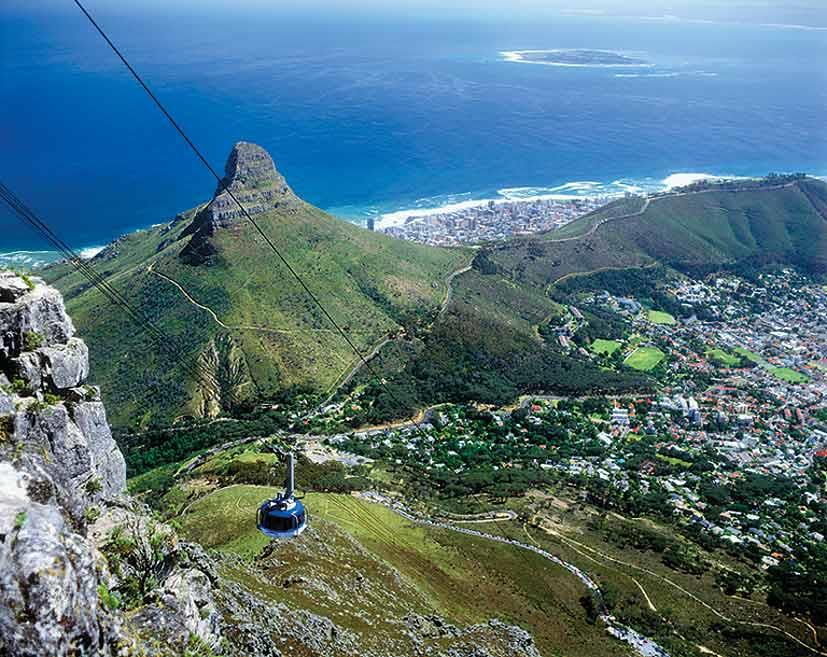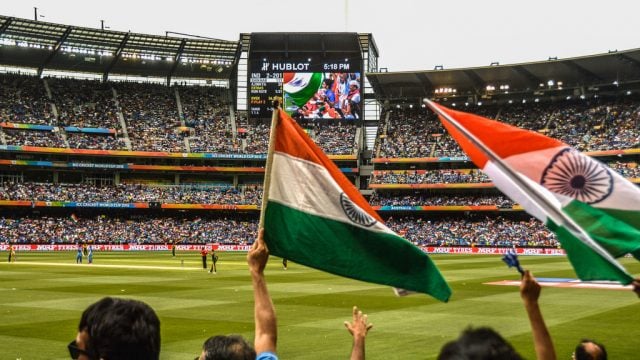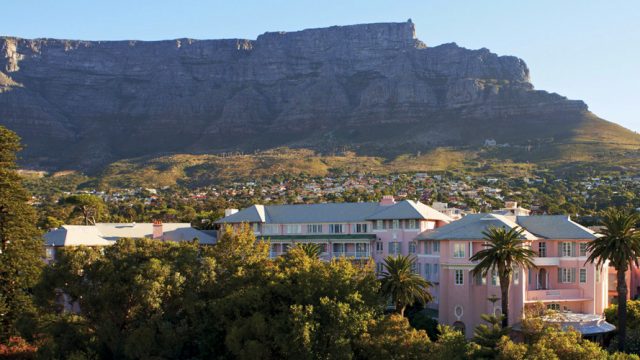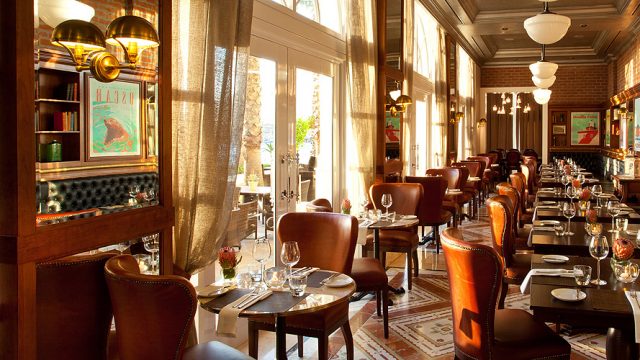Some years ago, Kulula, a South African budget airline, released a series of cheeky advertisements that highlighted
For years, through the time I lived in Johannesburg, I bought into this story. Johannesburg is a bustling metro with no obvious physical attractions and a brash, hectic sensibility. Cape Town is her beautiful, bored cousin — rich and spoilt, with a Mediterranean tan — or, if one is in a mean mood, her granny, a sweet old lady who’s living out her retirement by the sea. Johannesburg is a black city; Cape Town is coloured, or worse, white. (The taxonomy of South African insults has a generous scope, wherein all race groups — from black African to Indian to so-called ‘coloured’ and white — are welcome.) Johannesburg is the African city of the future; Cape Town is a European anomaly from the past. And so it goes.
Never mind that none of this is actually true. Beauty will be envied and, if I were a Capetonian, I’d measure the worth of my city in direct proportion to the insults that pile up on my doorstep. Forget the looming mountains and glistening oceans that frame this town; leave aside the achingly beautiful buildings and gardens and museums and walking routes; ignore the fine restaurants, the cafés and the genteel second-hand bookshops; then consider that almost no other city in the world can match Cape Town’s gene pool. It’s a crucible of civilisation. And sure, it comes with all of civilisation’s attendant pitfalls, but what a glorious pit this is: the original South African indigene (the Khoi and the San), the newer South African indigene (the ‘Bantus’ of yore), the Dutch, the French, the English, the Boer, their slaves (from East Africa, Southern Africa, Madagascar and Indonesia), the Indian and, in recent times, people of every nationality from within the African continent and beyond.
The mix — such as Cape Town mixes — is dazzling.
The curmudgeonly will point out that Cape Town doesn’t mix. And while this is partly true, it doesn’t mean that Cape Town can’t mix. The problems, of course, are those old chestnuts — class, race and space. Cape Town is 30 per cent black and twenty per cent white (the rest are classified as coloured). Even in a city like Johannesburg (seventy-five per cent black and sixteen per cent white), there are whole localities that look like Europe. Black people do not form the majority of the middle class anywhere in South Africa, and consequently some venues in the country, especially in Cape Town, can feel quite strange. None of this should bother you: things are changing every single day, even in Cape Town, and with a little skill and spirit, it is entirely possible to get the whole South African experience in the Mother City.
The football world cup is around the corner and just about everything in Cape Town seems to be in the process of being renovated or refurbished. Despite the grumblings that the government’s affection for world-class stadiums stands in stark contrast to its distaste for affordable housing, ‘2010’ has been a fervent hope and the object of unbridled enthusiasm ever since South Africa won the lotto at FIFA some years ago. This enthusiasm would explain Jet’s new flight route from Mumbai to Johannesburg, and the recent opening of the Taj Cape Town.
It’s also a huge relief. When in the city, I like to do city things, and the Taj is perfectly placed for a person with my tendencies. The downtown pulse extends right up to my doorstep, and the city’s best museums, parks, nightclubs and restaurants are all within walking distance. The first thing I did was get out of the hotel to breathe the air. If you live in Bangalore, travelling to Cape Town is like recovering from a tubercular condition — I now understand the nineteenth-century European habit of sending the lungs on holiday. In wintertime (this is the southern hemisphere, after all), the mornings are misty and dewy, the days bright and crisp, and the nights romantically shrouded in fog.
Walking through Cape Town is a civilised way to see it. I started in the Company’s Garden, exactly twenty steps away from my hotel door, which dates back to the year 1652, to Jan van Riebeeck’s arrival in the city — the company in question being the Dutch East India Company. What began as a way-station for Dutch plunderers en route to the East Indies would become the legislative capital of the Republic of South Africa, and the Company’s Garden is now the centrepiece of contemporary Cape Town, flanked by the South African parliament buildings, the President’s local office and the National Gallery. The Company’s Garden makes for a good half-day’s stroll, but for the real thing — real forestland — the place to go would be the Kirstenbosch National Botanical Garden, a short drive away. This national park was once Cecil John Rhodes’s front lawn, and it included the other place you would go to really stretch your legs — the Table Mountain National Park. Atop Devil’s Peak in the foothills of the Table Mountain is the Rhodes Memorial — because true posterity is a Herbert Baker-designed grave, never mind that you’ve already put your name on a region so big it will eventually become two whole countries. On a good day, when the sun is out, walking through Cape Town’s parks — these are only three of several hundred others — with the Table Mountain in sight, or the distant sea, or a herd of wildebeest, is nothing short of remarkable.
That leaves farm. There’s Constantia — home to exiled British bad boys, stray Italian mafiosi and the inevitable Equatorial Guinean dictator — to which I didn’t go. Or Franschoek — a tiny village of Huguenot origin, with a museum commemorating their presence in South Africa, fine French cuisine at fine French prices, and where an annual literary festival draws national and international writers — to which I did go; or Stellenbosch, a gracious town that is the spiritual capital of the Afrikaner world and sometimes not in a nice way; or the winelands — a tourist magnet—where wineries housed in resplendent Cape-Dutch mansions produce world-famous wine, while also, occasionally, hobbling their hapless labour by paying them in alcohol. They are beautiful and all, but what with the European playacting, my race-o-metre goes haywire; if you must go, remember: here be dragons.
The other route is cultural. This is what I like best, and spent most of my time doing while staying at the Taj, in part because it was so easy to access. At the National Gallery, in anticipation of the World Cup, I saw what is possibly the single largest exhibition of South African art that has ever been put together — a hundred years of painting, drawing, installing, imaging, and what have you — starting in 1910 and ending in the present day. The show, entitledFrom Pierneef to Gugulective runs until October and demands a day of your time for its sheer expanse. Right next to the National Gallery, and directly opposite the doors of the Taj, is the Slave Lodge — the original destination of incumbent slaves, before they were appraised, sorted and auctioned off. The building is now a museum to slavery in South Africa, meticulously documenting the forced migration of people from as far afield as Indonesia — the origins of a racial grouping called Cape Malay, whose descendants still carry the label today.
Further down, on Buitenkant Street, the District 6 Museum remembers those who thrived in a cultural hotspot of the 1960s and the 1970s — until they were forced out by the apartheid regime and the area became ‘whites-only’. Like most sites in South Africa that remember a time of oppression, the District 6 Museum gets it right by celebrating the joy as well as commemorating the pain. Around the corner is City Hall, which was undergoing a furious makeover while I walked through it; in the process of turning into the temporary headquarters of FIFA for the duration of the World Cup. In its heyday, the building served as the site of the city administration, and it is best remembered for February 11, 1990, the day that Nelson Mandela was released after twenty-seven years in prison, when he made his first public appearance to a crowd of half a million people from the balcony of the building.
In the day (and Cape Town has a strictly ordered day; businesses open at 8am and shut by 4pm), I wandered around the bookstores and thrift shops that dot downtown, enjoying the sights of the Long Street antiques market and the justifiably renowned Clarke’s Bookshop. For breaks, I went to the Jiva spa back at the Taj, where my head, back and feet were expertly moulded to a soundtrack of soothing transcendental music. I can confirm that there is simply no better way to break up the day than with a late afternoon massage; having one’s head pounded in the day is the best prelude to hearing head-pounding music at night.
Speaking of the night, Long Street is a vast and multifarious zone of pleasure that cuts right across the heart of Cape Town. By day, there is art, clothing and commerce; by night, music, drinking and dancing. My own preferred night haunt, however, is Observatory — abbreviated to Obz — a laidback suburb that is close to the University of Cape Town and popular with its students. It feels like a relaxed side-street in Goa. On my last night in the city, I went to an impossibly small, dimly lit, extremely smoky and altogether sublime bar called Tagore’s, where period funk played on the turntables. Cape Town doesn’t have the quaint moral rectitude of Bangalore, which means that bars don’t have to shut at 11pm and can instead open around then, which in turn means that I left Obz just in time to catch my flight back home.
It was raining the morning I left, and still dark outside. I stumbled through the motions, returning my rental car and slowly making my way to the airport terminal building. I looked around the eerily deserted airport. Good, I thought: at least there will be less to miss. No such luck. The sun broke as our plane took off, and as we circled the mountains, the oceans and loud bursts of green in between, I immediately thought of home, of construction rubble and early morning truck traffic, and sat back, perversely satisfied in my disconsolation.
The information
Getting there
You can fly from Mumbai to Cape Town via Johannesburg on South African Airways (from Rs. 42,000). Another option would be to fly Emirates via Dubai (from about Rs. 47,000).
Where to stay
Cape Town is choc-a-bloc with luxury hotels: the Mount Nelson (from $493; +27-21-4831737,mountnelson.co.za); the Taj Cape Town (from $282; 8192000, tajhotels.com) on Wale Street, has an unbeatable location right in the heart of the city. The best performer on the backpacker circuit is Afrique du Sud in Sea Point (from $14 for dorm and $49 for a double room; 4399028, afriquedusudbackpackers.co.za).
Johannesburg
South Africa
Leave a Reply
You must be logged in to post a comment.





